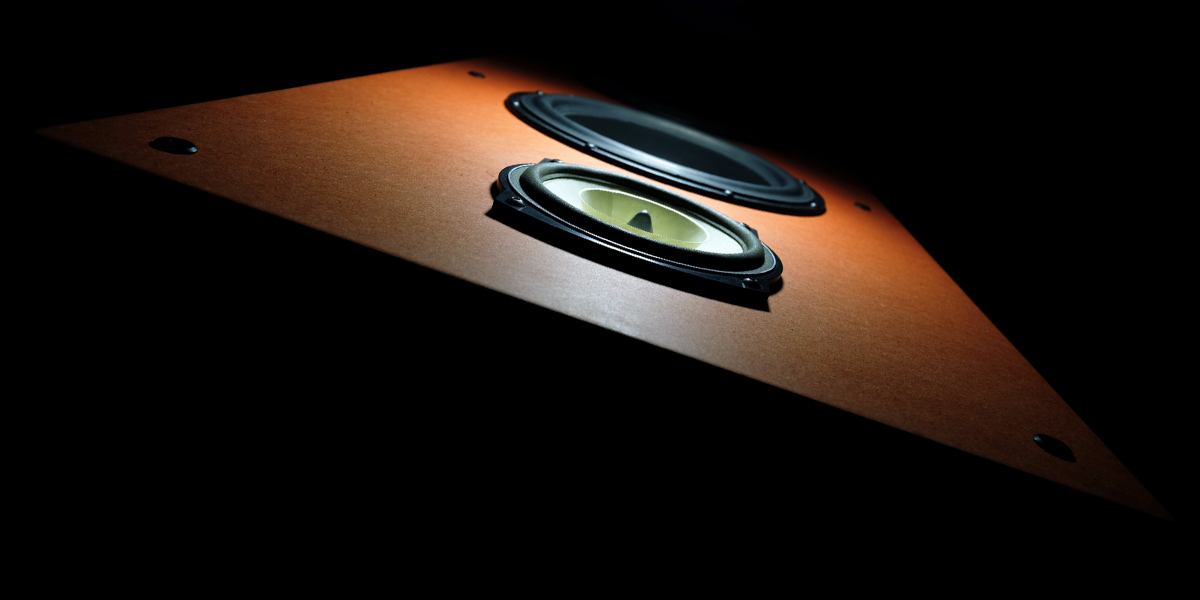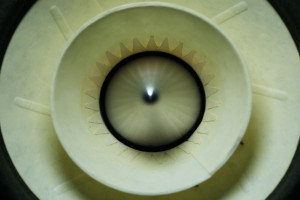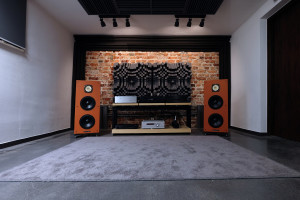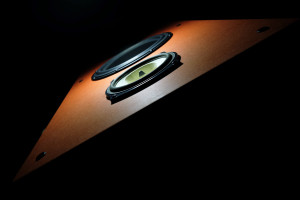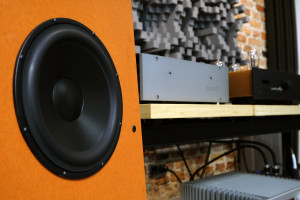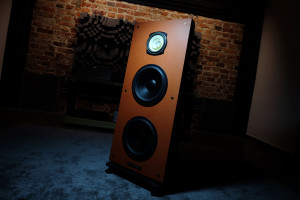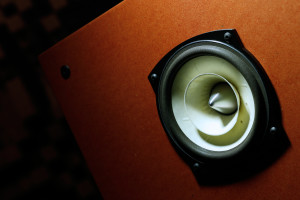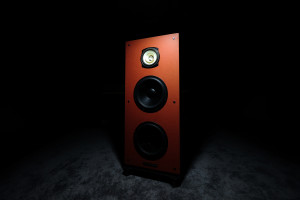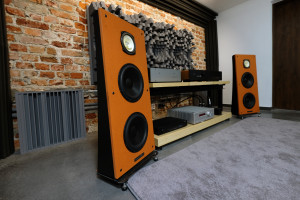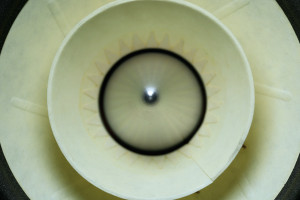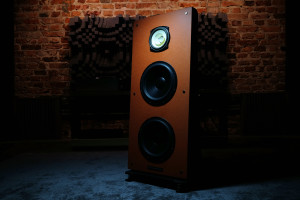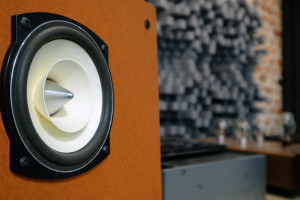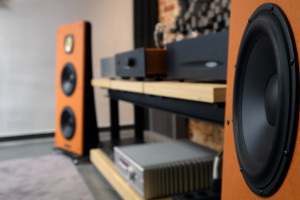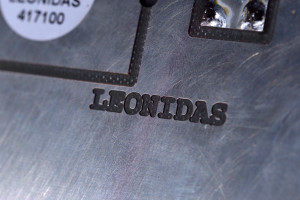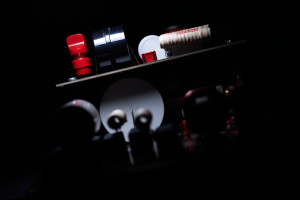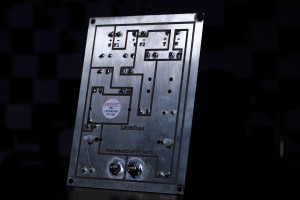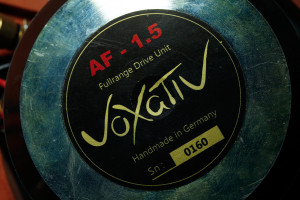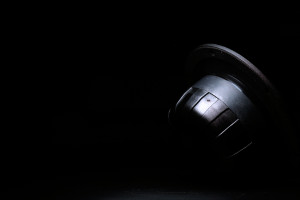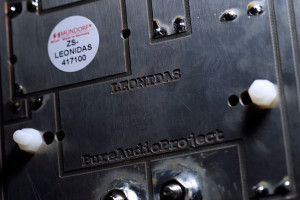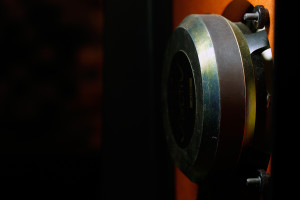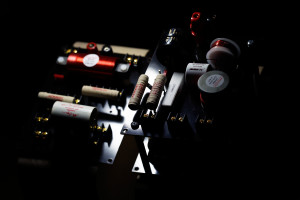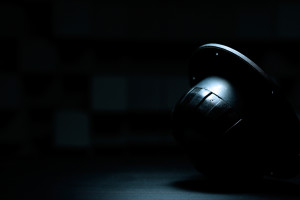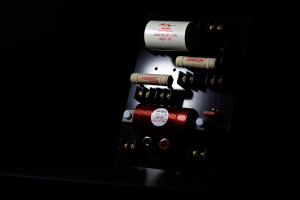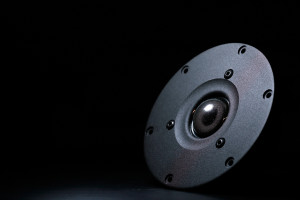The 5th of April 2017 was the date when my PureAudioProject Trio10 Timeless review went online. This product turned out to be exceptional on many levels. And when I thought that my Israeli assignment is over, several additional boxes arrived and PureAudioProject Trio10 Voxativ became this review’s main dish in the process. Enjoy!
Introduction
Dear reader, before getting yourself familiarized with this story, please allow me to direct your attention to this place first. Rather extensive description found in there is crucial in order to fully grasp what the review in front of you is all about. For now I’ll simply say briefly that the PureAudioProject is a very unique operation, heavily focused on open-baffle speakers. The fun part is that not a pre-made product arrives to a customer’s doorstep, but several boxes filled with parts instead; drivers, passive cross-overs, frames, pre-cut baffles, feet with washers and a bunch of screws on top of that. In short, anything one needs in order to DIY a singing speakers in several hours tops. Yep, you got this right, the assembly itself is on a listener’s shoulders. “Where’s the fun in that?!?”, one might ask at first and rightfully so. Why to burden a listener with such a chore? Still, this task turned out to be one of the most fun-giving work-related activities I’ve had a pleasure to perform in my journalistic life, I kid you not. Mainly because I’ve learned something very new and the procedure itself, although quite time consuming, was completely tools-free and smooth from start to finish, hence surprisingly pleasant. And – as I’ve described in my Trio 10 Timeless review – the sensation of a product operational as intended was unbeatable. Now let’s fast forward several months.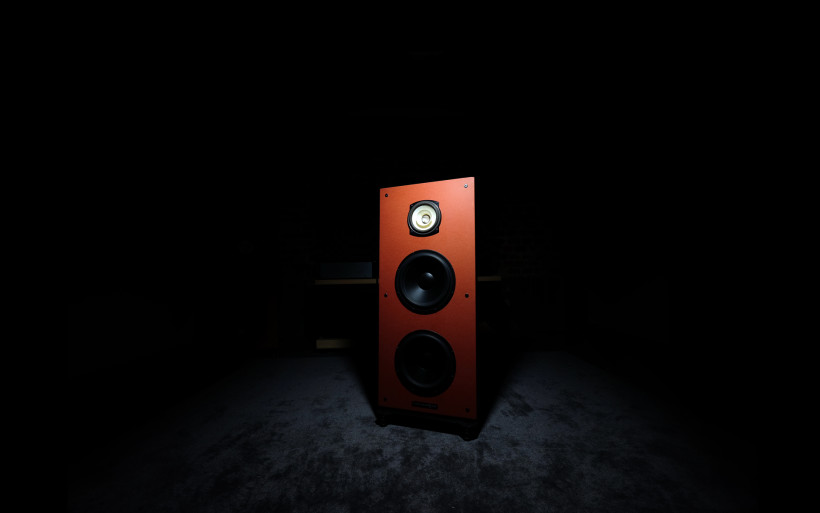 In September, Ze’ev Schlik – the PureAudioProject’s founder and this operation’s creative brain – wrote to yours truly with a peculiar ask. He wanted me give his new Trio10 Timeless tweeter a go and share my thoughts on the subject. The man himself didn’t want to spill ’em beans before the very first audition, of course in order to not influence my point of view or to bias me in any way. Fair enough. He also informed me that no cross-over alterations had to be done in order for a pair of new transducers to behave themselves. The swapping procedure was painless and quick. It took me less than ten minutes to have new drivers operational. How these perform? Well, they look similarly, yet are on the next refinement level easily. When one hears greater decay, more substance and differentiation and all this is served in smoother fashion in comparison to the previous iteration… you get the point. The real progress has been made and it’s perfectly audible. After several drivers’ swaps, my honest feedback was given. It turned out that it resonated with observations the man himself Ze’ev had. Who would’ve thought…
In September, Ze’ev Schlik – the PureAudioProject’s founder and this operation’s creative brain – wrote to yours truly with a peculiar ask. He wanted me give his new Trio10 Timeless tweeter a go and share my thoughts on the subject. The man himself didn’t want to spill ’em beans before the very first audition, of course in order to not influence my point of view or to bias me in any way. Fair enough. He also informed me that no cross-over alterations had to be done in order for a pair of new transducers to behave themselves. The swapping procedure was painless and quick. It took me less than ten minutes to have new drivers operational. How these perform? Well, they look similarly, yet are on the next refinement level easily. When one hears greater decay, more substance and differentiation and all this is served in smoother fashion in comparison to the previous iteration… you get the point. The real progress has been made and it’s perfectly audible. After several drivers’ swaps, my honest feedback was given. It turned out that it resonated with observations the man himself Ze’ev had. Who would’ve thought…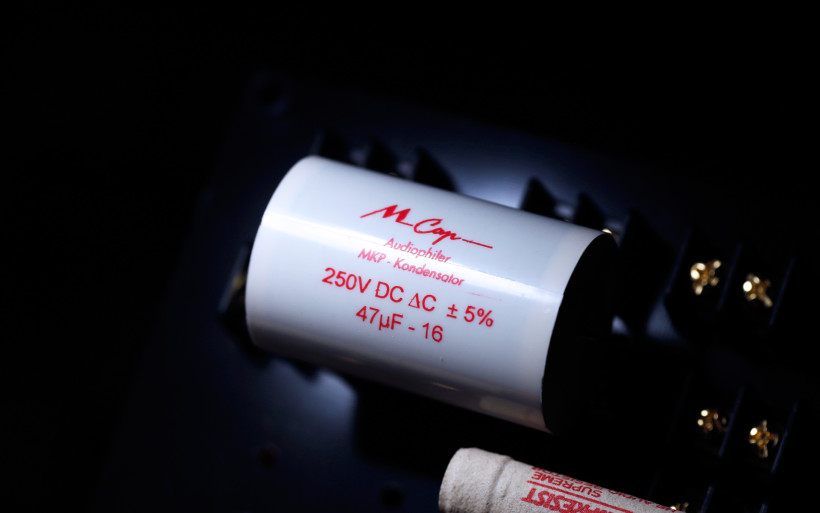 Yet the important part is that several additional and rather large boxes arrived shortly after and – past taking a quick glimpse inside each of ’em – it was quite obvious what will happen next. In an instant things escalated immensely from a simple tweeter related matter to something much more engaging. Long story’s short, Trio10 Voxativ parts have landed at my doorstep and that changed a lot. Early on yours truly had no idea how much exactly, now he does and this writing is all about this full-rangers and woofers combo related ride.
Yet the important part is that several additional and rather large boxes arrived shortly after and – past taking a quick glimpse inside each of ’em – it was quite obvious what will happen next. In an instant things escalated immensely from a simple tweeter related matter to something much more engaging. Long story’s short, Trio10 Voxativ parts have landed at my doorstep and that changed a lot. Early on yours truly had no idea how much exactly, now he does and this writing is all about this full-rangers and woofers combo related ride.
Build
Let’s take a look at the Trio10 line-up. The happy bunch consists of four musketeers in total; Timeless (which I’ve already covered), AMT by Mundorf, AMT by Beyma and lastly Voxativ. Each of these cost €2’999, €4’290, €3’899 and €5’490 respectively. The concept here is simple. One gets an affordable and nicely finished OB affair pre-loaded with 2 x 10″ PAP-1075 (heavily customized MW-1075) woofers per side, these are manufactured by Israeli Morel operation. Yet the exceptionally important rest is open to an interpretation and differently served sound characteristic is the key. One cherry-picks subjectively the most likeable one out of four versions available and – if it fits in his/hers budget – rolls with it. In any case, what differs are crossovers and what’s above 10″ transducers made solely for PureAudioProject. Alright, it might not be seen as much to have only one driver adjustable. But this visually modest change is of very extensive nature actually, it shifts the sound meta significantly. Let me explain.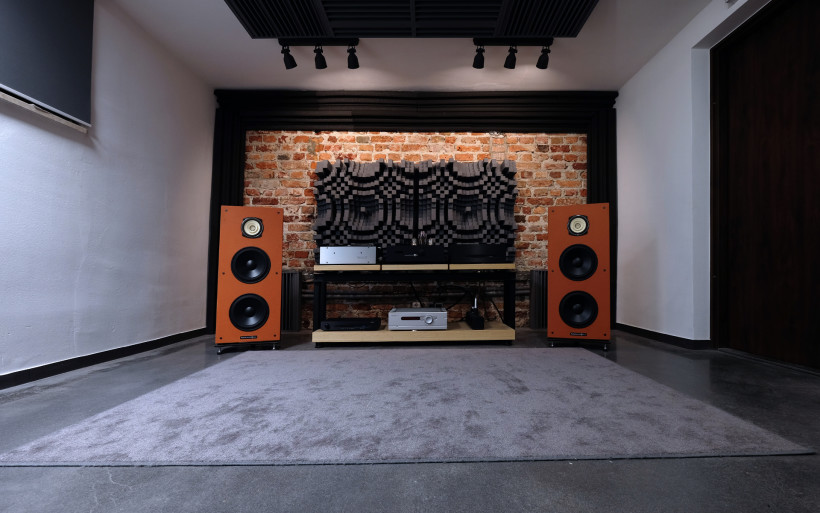 In the Trio10 Timeless case, the lowest woofer sings up to 250 Hz, the one above stops at 6,5 kHz and then the tweeter gets the job done from there. It’s worth to acknowledge that the second 10″ driver is not responsible solely for bass as it handles mid FR as well. Moving on, x-overs seen in the Timeless model are big, generous as far as sheer parts number goes and fairly complex. At least in comparison to this review’s main dish, please take a look at the picture of the two down below and be the judge for yourself. Yes, the bigger one belongs to the Timeless version. “What kind of trickery is this?!?”. Ha, rest assured that no tricks of any sort are the case here. Not in the slightest. Sometimes less is simply more and for a perfectly valid reason.
In the Trio10 Timeless case, the lowest woofer sings up to 250 Hz, the one above stops at 6,5 kHz and then the tweeter gets the job done from there. It’s worth to acknowledge that the second 10″ driver is not responsible solely for bass as it handles mid FR as well. Moving on, x-overs seen in the Timeless model are big, generous as far as sheer parts number goes and fairly complex. At least in comparison to this review’s main dish, please take a look at the picture of the two down below and be the judge for yourself. Yes, the bigger one belongs to the Timeless version. “What kind of trickery is this?!?”. Ha, rest assured that no tricks of any sort are the case here. Not in the slightest. Sometimes less is simply more and for a perfectly valid reason.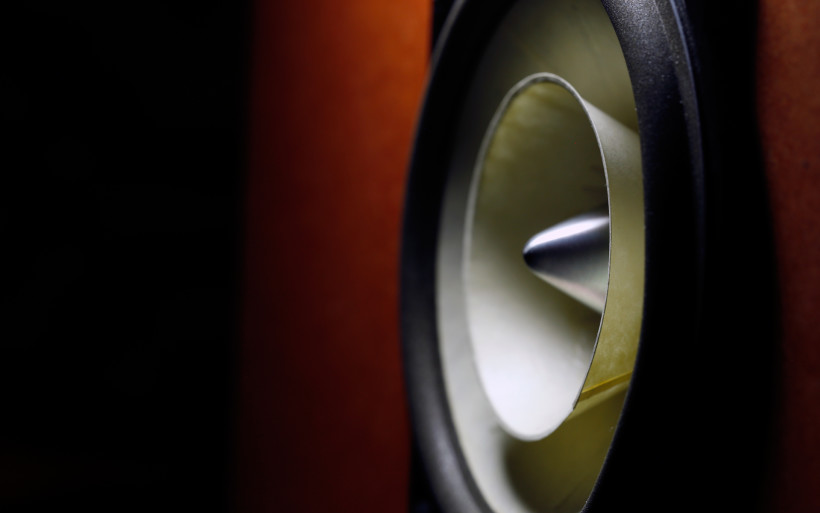 Trio10 Voxativ exploits all virtues of Holger Adler’s AF-1.5 drivers and these – as goods the Voxativ manufacture is the most known for – are full-range drivers. Yes, this means that said transducers – when loaded with a transmission line alike enclosure – are able to handle bass and can work on their own completely, but this is of no importance in the Israeli product. Here each AF-1.5 unit delivers both mids and highs, therefore marks its territory quite early, from somewhere around 300 Hz all the way upwards, yet not bass. Two 10″ PAP-1075 woofers handle it instead and then some. That’s plenty of cone surface for the former task when applied in a perfectly domestic environment and not in a concert hall. Plenty.
Trio10 Voxativ exploits all virtues of Holger Adler’s AF-1.5 drivers and these – as goods the Voxativ manufacture is the most known for – are full-range drivers. Yes, this means that said transducers – when loaded with a transmission line alike enclosure – are able to handle bass and can work on their own completely, but this is of no importance in the Israeli product. Here each AF-1.5 unit delivers both mids and highs, therefore marks its territory quite early, from somewhere around 300 Hz all the way upwards, yet not bass. Two 10″ PAP-1075 woofers handle it instead and then some. That’s plenty of cone surface for the former task when applied in a perfectly domestic environment and not in a concert hall. Plenty.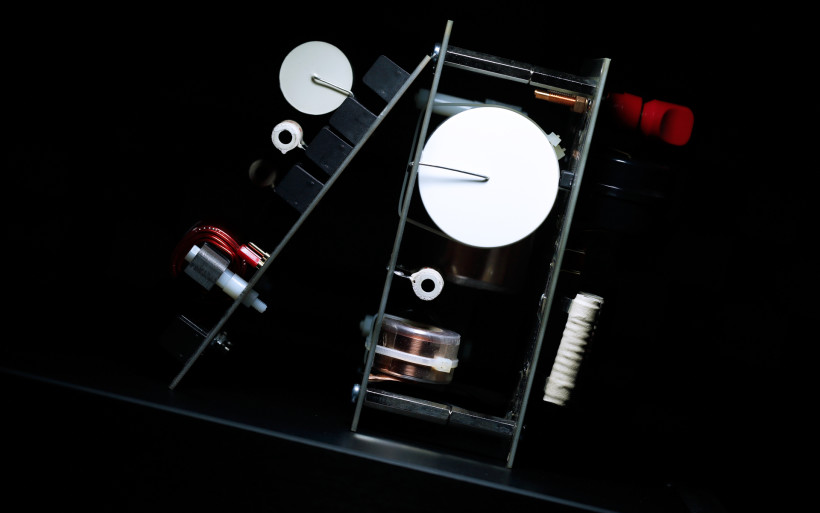 Ze’ev Schlik is not in the transmission line loaded full-range game, he plays solely on the OB field instead. And knowing how difficult widebanders can be, he exploits them where they are the most potent. Yes, everything from mid FR above is on the table. To achieve proper low extension and slam in general is the hardest part with full-rangers, that’s hardly a secret. Still, to make it easier for them by liberation from this chore in favour of augmenting the downstairs department by two 10″ units? This, dear reader, I call the smart play and nothing less. And as practice shows, such alignment works brilliantly, but we’ll get to that part down below.
Ze’ev Schlik is not in the transmission line loaded full-range game, he plays solely on the OB field instead. And knowing how difficult widebanders can be, he exploits them where they are the most potent. Yes, everything from mid FR above is on the table. To achieve proper low extension and slam in general is the hardest part with full-rangers, that’s hardly a secret. Still, to make it easier for them by liberation from this chore in favour of augmenting the downstairs department by two 10″ units? This, dear reader, I call the smart play and nothing less. And as practice shows, such alignment works brilliantly, but we’ll get to that part down below.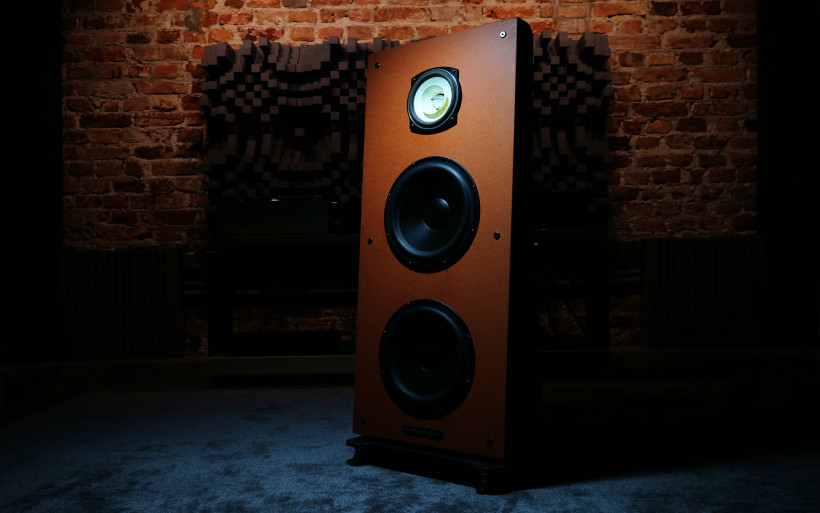 Please take a look at Trio10 Voxativ’s cross-over once again. Simple, ain’t it? That’s on purpose as nothing of greater complexity is needed. One has to simply cut Morel woofers’ top FR, add Voxativ’s AF-1.5 (this one naturally cuts off at 250 Hz) and that’s it. All this looks like the 1st order affair, yet it isn’t. Such filters are separated, on the contrary to the Trio10 Voxativ circuitry, but slopes in these two are similar. Both woofers are 6 dB off at 600 Hz, which means that their midrange contribution is extensive, though are augmented by the German widebander still, hence there’s some overlapping going on. Moving on, the cross-over (times two of course) delivered to yours truly is the so-called Leonidas. Speaker terminals aside, not a single filtration component is soldered. Yes, both XOs arrived with two separate bags filled with capacitors, resistors and coils. All these are made by Mundorf. Leonidas isn’t pre-made similarly to its Timeless equivalent, therefore it needs some mild DIY, but actually is very easy to assemble. All it takes is a screwdriver and half an hour time or so. First of all, several logically placed terminals are to be found in there, which means soldering iron is off the table. Then each element out of four in total needs to be fastened to XO’s clamps via screws and… that’s it. In order to make the procedure as painless as possible, there’s the properly informational guide with pictures on the manufacturer’s site.
Please take a look at Trio10 Voxativ’s cross-over once again. Simple, ain’t it? That’s on purpose as nothing of greater complexity is needed. One has to simply cut Morel woofers’ top FR, add Voxativ’s AF-1.5 (this one naturally cuts off at 250 Hz) and that’s it. All this looks like the 1st order affair, yet it isn’t. Such filters are separated, on the contrary to the Trio10 Voxativ circuitry, but slopes in these two are similar. Both woofers are 6 dB off at 600 Hz, which means that their midrange contribution is extensive, though are augmented by the German widebander still, hence there’s some overlapping going on. Moving on, the cross-over (times two of course) delivered to yours truly is the so-called Leonidas. Speaker terminals aside, not a single filtration component is soldered. Yes, both XOs arrived with two separate bags filled with capacitors, resistors and coils. All these are made by Mundorf. Leonidas isn’t pre-made similarly to its Timeless equivalent, therefore it needs some mild DIY, but actually is very easy to assemble. All it takes is a screwdriver and half an hour time or so. First of all, several logically placed terminals are to be found in there, which means soldering iron is off the table. Then each element out of four in total needs to be fastened to XO’s clamps via screws and… that’s it. In order to make the procedure as painless as possible, there’s the properly informational guide with pictures on the manufacturer’s site.
Sound
In order to review PureAudioProject Trio10 Voxativ open-baffle floorstanders, Cube Audio Magus model and my Boenicke W8 reference speakers were used. Trilogy 925 integrated, Trilogy 993 + 903, FirstWatt F7 and Sanders Sound Systems Magtech were on duty as well. As per usual, LampizatOr Golden Gate (Psvane WE-101D + KR Audio 5U4G Ltd. Ed.) handled the d/a conversion task, whereas Asus UX305LA was responsible for files storage and OS control. Let’s start with the obvious bits first. Trio10 Voxativ is of the OB breed and as such, it performs in a particular way. This subject was already tackled in the Trio10 Timeless case, but for the sake of the facts let’s get back to it once again. The sound coming from any OB known to yours truly is – dares he to say – uncompressed and very much ‘here and now’ alike. After getting myself familiarized with a number of open-baffle designs, I can only state that these sound nothing like the usual bass-reflex vented suspects. The difference here is quite severe and this scribe is somewhat biased towards enclosure free sound because of this exactly. Hey, each of us is drawn to one thing more than to the other and it’s actually helpful to know your own preferences. In any case, the ‘uncompressed’ sound means bass performance served directly and effortlessly, with no boominess of its own, unless a given room’s mods say ‘yay’ of course, but that’s another story. As there’s no enclosure, there’s no compression to elevate low FR’s response and woofers of rather large diameter are the countermeasure. Generous cone surface is mandatory here. To follow-up, big inches at works influence the sheer amount of air moved, which gets the scale job done very efficiently and that’s what draws people to the OB topology. All virtues mentioned above are addictive, very likeable in the process, damn impressive when delivered in one quality package and that’s the case with Trio10 Voxativ.
Let’s start with the obvious bits first. Trio10 Voxativ is of the OB breed and as such, it performs in a particular way. This subject was already tackled in the Trio10 Timeless case, but for the sake of the facts let’s get back to it once again. The sound coming from any OB known to yours truly is – dares he to say – uncompressed and very much ‘here and now’ alike. After getting myself familiarized with a number of open-baffle designs, I can only state that these sound nothing like the usual bass-reflex vented suspects. The difference here is quite severe and this scribe is somewhat biased towards enclosure free sound because of this exactly. Hey, each of us is drawn to one thing more than to the other and it’s actually helpful to know your own preferences. In any case, the ‘uncompressed’ sound means bass performance served directly and effortlessly, with no boominess of its own, unless a given room’s mods say ‘yay’ of course, but that’s another story. As there’s no enclosure, there’s no compression to elevate low FR’s response and woofers of rather large diameter are the countermeasure. Generous cone surface is mandatory here. To follow-up, big inches at works influence the sheer amount of air moved, which gets the scale job done very efficiently and that’s what draws people to the OB topology. All virtues mentioned above are addictive, very likeable in the process, damn impressive when delivered in one quality package and that’s the case with Trio10 Voxativ.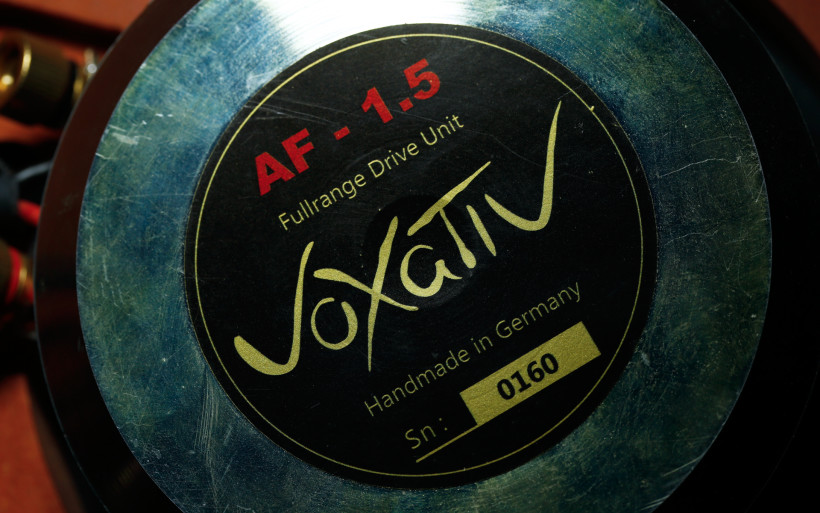 Now let’s move to full-range drivers. These are liked for very different reasons in comparison to naked bass drivers. It’s also somewhat difficult to properly dress widebanders’ input in words. The most precise answer would be the tangibility factor. When a quality transducer of this sort is on, magic happens. Live instruments materialize in front of a listener in a very lifelike and utterly pleasant fashion and similar story is with vocals. From yours truly perspective, the more he listens to these transducers, the more he understands what all the fuss is about with ’em. And at the same time the more convinced he becomes that such a unique outcome can’t be replaced by anything else. As I’ve said, quite unusual magic is the case and a very good one at that. The next upshot of full-range drivers is their point source sound characteristic, which translates to precise imaging. Once all things up above are taken into account, one fundamental question has to be asked now: was the idea to augment two 10″ OB woofers with widebander any good?
Now let’s move to full-range drivers. These are liked for very different reasons in comparison to naked bass drivers. It’s also somewhat difficult to properly dress widebanders’ input in words. The most precise answer would be the tangibility factor. When a quality transducer of this sort is on, magic happens. Live instruments materialize in front of a listener in a very lifelike and utterly pleasant fashion and similar story is with vocals. From yours truly perspective, the more he listens to these transducers, the more he understands what all the fuss is about with ’em. And at the same time the more convinced he becomes that such a unique outcome can’t be replaced by anything else. As I’ve said, quite unusual magic is the case and a very good one at that. The next upshot of full-range drivers is their point source sound characteristic, which translates to precise imaging. Once all things up above are taken into account, one fundamental question has to be asked now: was the idea to augment two 10″ OB woofers with widebander any good?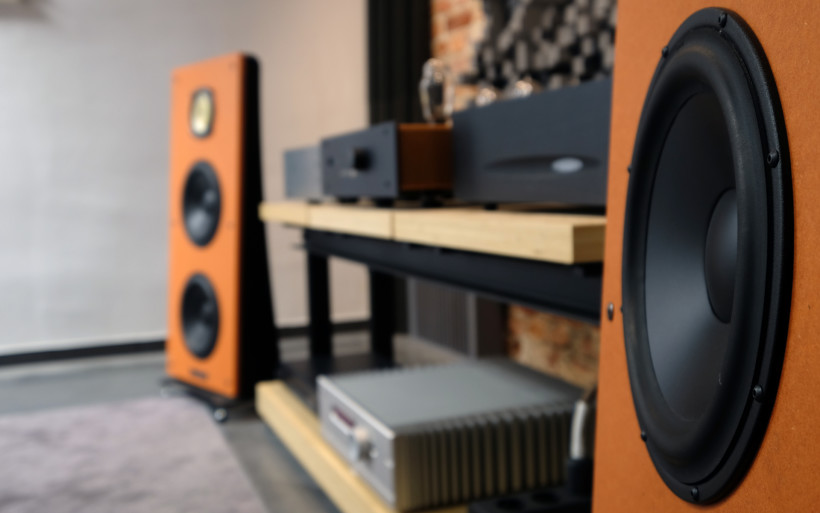 One of Ze’ev Schlik’s goals was to have grand, enclosure-free downstairs punch and he succeeded at that already. His Trio10 Timeless – the most affordable PureAudioProject product – turned out to be a very respectable and potent performer in this regard. Not only this, said model is the best measure to start the OB related adventure to this scribe. Past several months of usage, this product constantly has my strong recommendation as one of the sort. Still, its sibling loaded with one widebander per baffle ups the ante even more here. I wrote that its Timeless version sported somewhat romantic, music oriented approach in general, the sound it delivered was dense, very nicely textured, pleasant and this description fits to its bass as well. Usually OB affairs handle downstairs department in even feistier, less romantic fashion and Trio10 Voxativ arrived to do this exactly. The meta shifted towards agility in the latter case, yet surprisingly the live tissue remained as enjoyable as per usual.
One of Ze’ev Schlik’s goals was to have grand, enclosure-free downstairs punch and he succeeded at that already. His Trio10 Timeless – the most affordable PureAudioProject product – turned out to be a very respectable and potent performer in this regard. Not only this, said model is the best measure to start the OB related adventure to this scribe. Past several months of usage, this product constantly has my strong recommendation as one of the sort. Still, its sibling loaded with one widebander per baffle ups the ante even more here. I wrote that its Timeless version sported somewhat romantic, music oriented approach in general, the sound it delivered was dense, very nicely textured, pleasant and this description fits to its bass as well. Usually OB affairs handle downstairs department in even feistier, less romantic fashion and Trio10 Voxativ arrived to do this exactly. The meta shifted towards agility in the latter case, yet surprisingly the live tissue remained as enjoyable as per usual.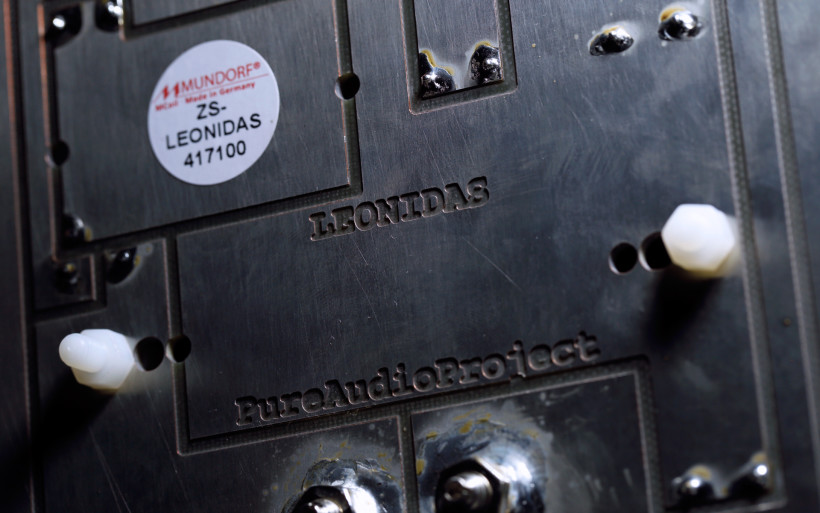 The most pricey Trio10 hero sings very boldly as far as its bass goes, there’s no question about it. But at the same time it’s able to deliver this FR lively, densely and properly muscularly in general. I’ve already explained that two 10″ woofers handle extensive part of the midrange, therefore mid and upper bass is included in the package too and that’s the realm where the pleasantly meaty monster lives. This not only gives the bass that ‘oomph’ we all like, but also leads to one simple conclusion: Trio10 Voxativ is a very substantial performer. But when properly amplified, it behaves itself like if it survived extensive military training; not only it looks very healthy and is fit to efficiently run/swim/march with no questions asked, but also is very obedient at the same time. To translate this to properly audiophile lingo, the balance between density, definition and tension is a spot-on.
The most pricey Trio10 hero sings very boldly as far as its bass goes, there’s no question about it. But at the same time it’s able to deliver this FR lively, densely and properly muscularly in general. I’ve already explained that two 10″ woofers handle extensive part of the midrange, therefore mid and upper bass is included in the package too and that’s the realm where the pleasantly meaty monster lives. This not only gives the bass that ‘oomph’ we all like, but also leads to one simple conclusion: Trio10 Voxativ is a very substantial performer. But when properly amplified, it behaves itself like if it survived extensive military training; not only it looks very healthy and is fit to efficiently run/swim/march with no questions asked, but also is very obedient at the same time. To translate this to properly audiophile lingo, the balance between density, definition and tension is a spot-on.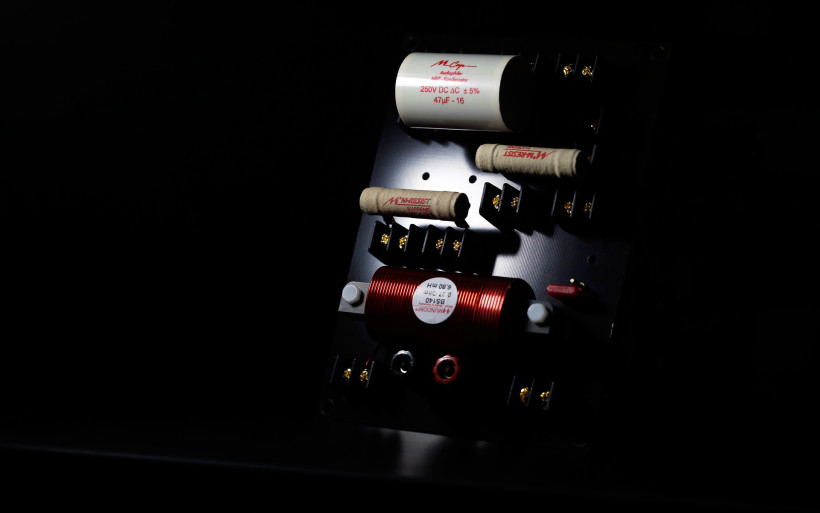 At first I wondered how well all three Trio10 Voxativ drivers will be sewn together. The sight of two 10″ PAP-1075 transducers might be somewhat intimidating to one 5″ full-range driver mounted a bit above. Yet practice showed that there’s no audible hole between ’em. Not only that, thoroughly coherent sound is actually one of Trio10 Voxativ’s key features. The sensation of things served orderly and evenly is constantly there with these speakers, not a single element stands out of the crowd. OK, to be perfectly fair, bass can get very thunderous, more felt than heard. But only if a given track demands it. For instance, many pieces from Danheim’s repertoire sport rather large drums and these are powerful on their own to listen to, at times even a bit over the top. That’s the part of the game, true. But the ability to display their energy and presence in front of a listener is important here and Israeli speakers handle this task with ease. The above mentioned ‘oomph’ is heard, yet no excessive boominess occurs and all this is pushed further by a present yet not overdone tension and generous downstairs reach. The outcome? No room to complain whatsoever.
At first I wondered how well all three Trio10 Voxativ drivers will be sewn together. The sight of two 10″ PAP-1075 transducers might be somewhat intimidating to one 5″ full-range driver mounted a bit above. Yet practice showed that there’s no audible hole between ’em. Not only that, thoroughly coherent sound is actually one of Trio10 Voxativ’s key features. The sensation of things served orderly and evenly is constantly there with these speakers, not a single element stands out of the crowd. OK, to be perfectly fair, bass can get very thunderous, more felt than heard. But only if a given track demands it. For instance, many pieces from Danheim’s repertoire sport rather large drums and these are powerful on their own to listen to, at times even a bit over the top. That’s the part of the game, true. But the ability to display their energy and presence in front of a listener is important here and Israeli speakers handle this task with ease. The above mentioned ‘oomph’ is heard, yet no excessive boominess occurs and all this is pushed further by a present yet not overdone tension and generous downstairs reach. The outcome? No room to complain whatsoever.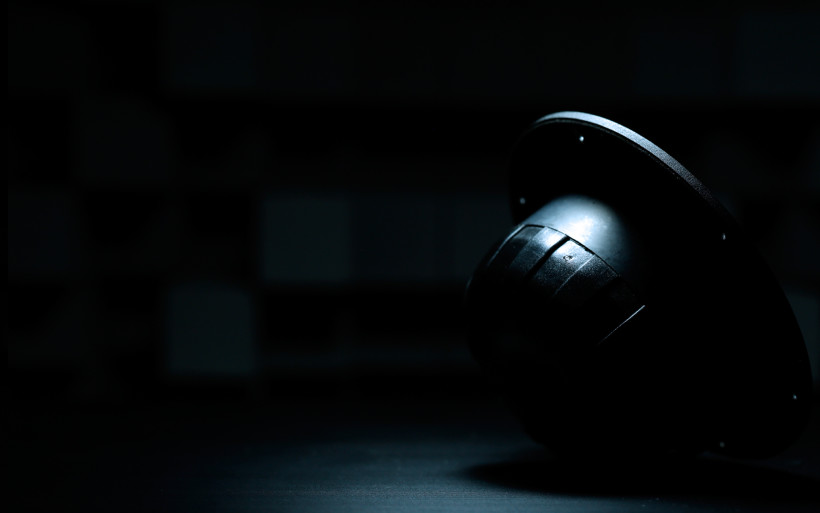 Moving on, each of small 5″ German transducers isn’t overshadowed by twice as wide drivers down below, not at all. Woofers serve as performers not of less/more importance, but of equal rights instead and at the same time allow widebanders to do their own job uninterrupted. Let’s invoke real instruments again, strings for example. “Gallow’s Pole” performed by Robert Plant & The Strange Sensation was unbeatable, I haven’t heard said song this good yet. Not only Trio10 Voxativ was able to properly introduce me to the concert hall itself (the product shows various types of environment brilliantly), but also Mr Plant’s rushing vocal complimented by several finely showcased guitars. All this was perfectly clear, smooth and of great quality overall. These instruments were very tangible with marvelously presented resonance boxes, like if someone had used ’em in front of me. Yep, that’s quality widebander in the works right there. I could multiply additional examples here to prove my point. I could describe what was on during listening to Zatoichi soundtrack or Smadj’s “Spleen“, yet I’d repeat myself. The takeaway here is that not a single reason to complain for this scribe was there. Heck, even drive was immense.
Moving on, each of small 5″ German transducers isn’t overshadowed by twice as wide drivers down below, not at all. Woofers serve as performers not of less/more importance, but of equal rights instead and at the same time allow widebanders to do their own job uninterrupted. Let’s invoke real instruments again, strings for example. “Gallow’s Pole” performed by Robert Plant & The Strange Sensation was unbeatable, I haven’t heard said song this good yet. Not only Trio10 Voxativ was able to properly introduce me to the concert hall itself (the product shows various types of environment brilliantly), but also Mr Plant’s rushing vocal complimented by several finely showcased guitars. All this was perfectly clear, smooth and of great quality overall. These instruments were very tangible with marvelously presented resonance boxes, like if someone had used ’em in front of me. Yep, that’s quality widebander in the works right there. I could multiply additional examples here to prove my point. I could describe what was on during listening to Zatoichi soundtrack or Smadj’s “Spleen“, yet I’d repeat myself. The takeaway here is that not a single reason to complain for this scribe was there. Heck, even drive was immense. The soundstage Trio10 Voxativ delivers is superb as well. First of all, it’s less constrictive in comparison to its Timeless brother, to a point where I can describe it as generously open with no hesitation; airy and very developed in every dimension. When listening to epic music, the notion of one giant mass of moving air was constant and this organism seemed to be very much alive. My point is that the very real and very convincing thing happened instead of individual sounds suspended somewhere in one stale space. This was heard very clearly once concert recordings were on. Damn, full-range transducers are opponents really tough to beat in this regard. I’m impressed.
The soundstage Trio10 Voxativ delivers is superb as well. First of all, it’s less constrictive in comparison to its Timeless brother, to a point where I can describe it as generously open with no hesitation; airy and very developed in every dimension. When listening to epic music, the notion of one giant mass of moving air was constant and this organism seemed to be very much alive. My point is that the very real and very convincing thing happened instead of individual sounds suspended somewhere in one stale space. This was heard very clearly once concert recordings were on. Damn, full-range transducers are opponents really tough to beat in this regard. I’m impressed.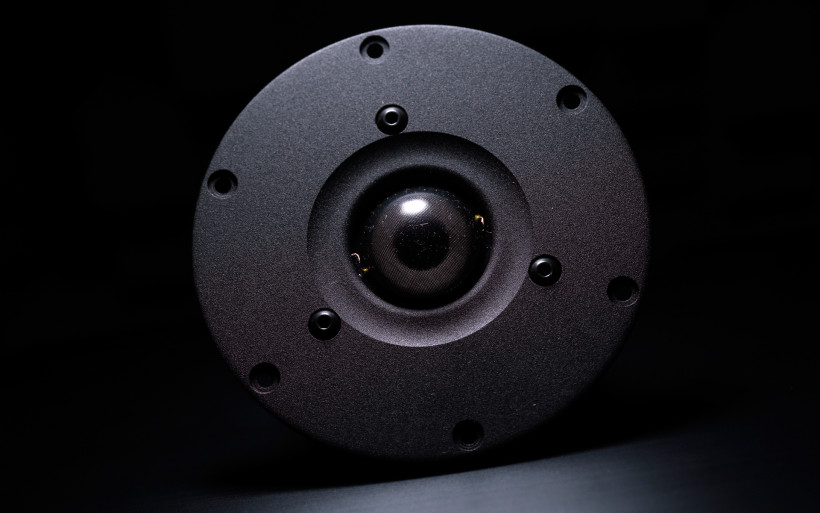 All confessions above lead to this one statement: Trio10 Voxativ fulfils the promise Ze’ev Schlik has made. All full-range virtues are perfectly present and of quality. Clarity, smoothness, tangibility… all this is here. But at the same time to have bass this feisty, rich and not overemphasized? The outcome is that the sound of Trio10 Voxativ is fantastic. It doesn’t put details on the pedestal, these happen naturally and are served effortlessly, on the contrary to music. Not only it’s in the first place, but the sensation that it goes before anything else is omnipresent. One simply sits, turns the details oriented mindset off and pleasure happens in an instant. My point here is that there’s no need or urge to understand what this product does with the sound, there’s no learning curve at all and this, dear readers, makes Trio10 Voxativ very easygoing to deal with.
All confessions above lead to this one statement: Trio10 Voxativ fulfils the promise Ze’ev Schlik has made. All full-range virtues are perfectly present and of quality. Clarity, smoothness, tangibility… all this is here. But at the same time to have bass this feisty, rich and not overemphasized? The outcome is that the sound of Trio10 Voxativ is fantastic. It doesn’t put details on the pedestal, these happen naturally and are served effortlessly, on the contrary to music. Not only it’s in the first place, but the sensation that it goes before anything else is omnipresent. One simply sits, turns the details oriented mindset off and pleasure happens in an instant. My point here is that there’s no need or urge to understand what this product does with the sound, there’s no learning curve at all and this, dear readers, makes Trio10 Voxativ very easygoing to deal with.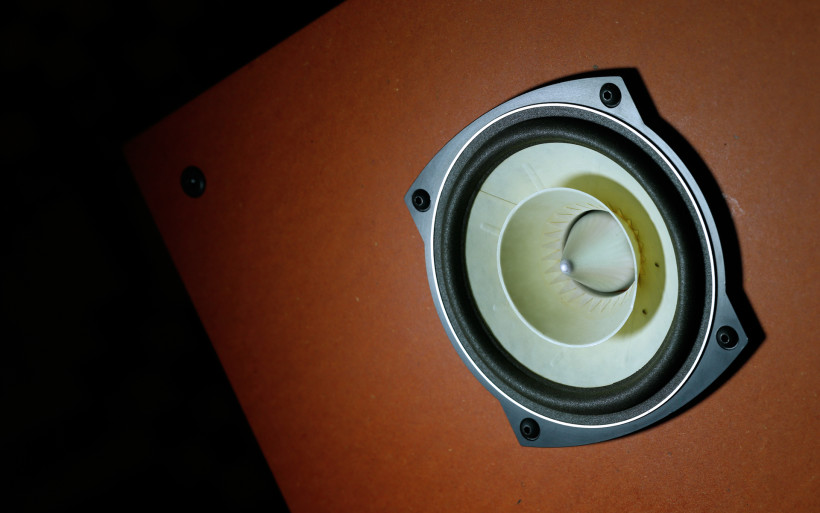 Let’s tackle the amplification matter. Both Trio10 performers need strong decks to sound great, there’s no question about it. Sheer power is the key and I’ve already explained why so in the Timeless review. Out of four amplifiers I had nearby during the review procedure, one was an instant no-go, one was good but not great, one got the job done just fine and one was superior in comparison to the rest and utterly enjoyable in the process. Which one’s which? That’s easy. FirstWatt F7 with its 20WPC didn’t do Trio10 Voxativ justice, not a chance. Yes, the sound was heard, yet neither bass nor drive were there, case closed. Next in line was Trilogy 925. This English integrated is on the slower, somewhat fuzzy side and that’s audible. Yes, it delivers fantastic midrange and creates very impressive soundstage, but was built to handle easier loads. The 925 gave me the sensation of drivers grabbed by their cojones, as this is what this amp usually does, but these weren’t at work much. Speed was the missing factor.
Let’s tackle the amplification matter. Both Trio10 performers need strong decks to sound great, there’s no question about it. Sheer power is the key and I’ve already explained why so in the Timeless review. Out of four amplifiers I had nearby during the review procedure, one was an instant no-go, one was good but not great, one got the job done just fine and one was superior in comparison to the rest and utterly enjoyable in the process. Which one’s which? That’s easy. FirstWatt F7 with its 20WPC didn’t do Trio10 Voxativ justice, not a chance. Yes, the sound was heard, yet neither bass nor drive were there, case closed. Next in line was Trilogy 925. This English integrated is on the slower, somewhat fuzzy side and that’s audible. Yes, it delivers fantastic midrange and creates very impressive soundstage, but was built to handle easier loads. The 925 gave me the sensation of drivers grabbed by their cojones, as this is what this amp usually does, but these weren’t at work much. Speed was the missing factor.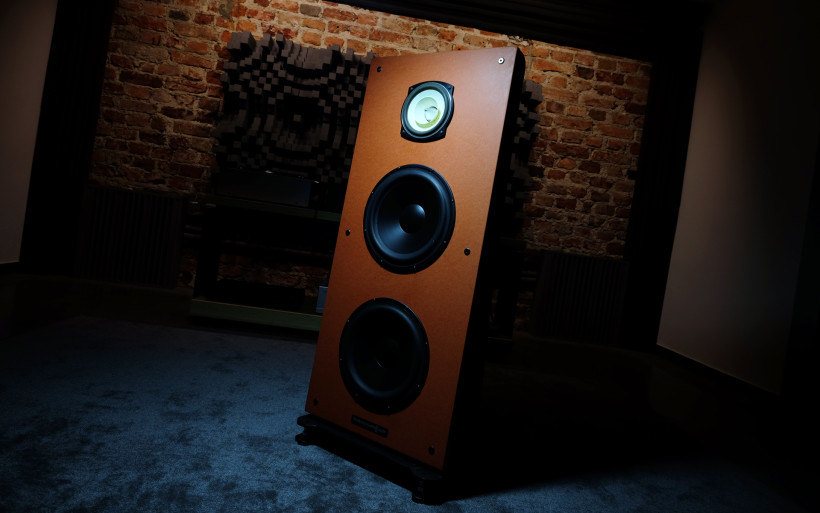 After the 925 experience, the time came for American Magtech stereo power amplifier. This one delivered drive like it was nothing, but flattened and shortened the soundstage. And it took the 925 magic away. In short, some things were stolen and some given in return. Yes, the outcome was very good and – past the accommodation phase – perfectly listenable. But if it’s known that an amp is the major bottleneck, it’s not a matter of ‘if’, but ‘when’ it’ll be replaced. And lastly, the 993 + 903 Trilogy combo. This duo provided immense drive, but at the same time was able to maintain a large percentage of the 925 magic. I got the best of both worlds and was utterly happy with the effect. The conclusion? Trio10 Voxativ scales unusually well with electronics and is not very picky, but needs lots of Watts in order for one to understand what it’s capable of. Quality Class D is something I’d aim for and so is Class AB. I’d stick to silicone and skip valves completely. Ze’ev recently told me that he had a blast with Exogal’s Comet and IonPowerDAC combo. Let’s add Wyred4Sound decks and the picture is complete. Yes, power is the answer.
After the 925 experience, the time came for American Magtech stereo power amplifier. This one delivered drive like it was nothing, but flattened and shortened the soundstage. And it took the 925 magic away. In short, some things were stolen and some given in return. Yes, the outcome was very good and – past the accommodation phase – perfectly listenable. But if it’s known that an amp is the major bottleneck, it’s not a matter of ‘if’, but ‘when’ it’ll be replaced. And lastly, the 993 + 903 Trilogy combo. This duo provided immense drive, but at the same time was able to maintain a large percentage of the 925 magic. I got the best of both worlds and was utterly happy with the effect. The conclusion? Trio10 Voxativ scales unusually well with electronics and is not very picky, but needs lots of Watts in order for one to understand what it’s capable of. Quality Class D is something I’d aim for and so is Class AB. I’d stick to silicone and skip valves completely. Ze’ev recently told me that he had a blast with Exogal’s Comet and IonPowerDAC combo. Let’s add Wyred4Sound decks and the picture is complete. Yes, power is the answer.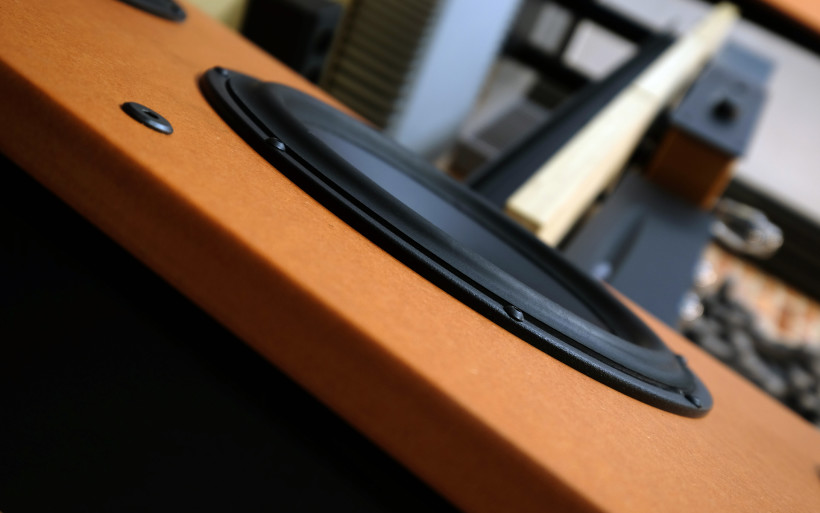 One last thing to mention before we’ll wrap this writing up is the brawl with other speakers. Please feel free to read how Trio10 Voxativ fared against Cube Audio Magus here. The latter is a full-fledged Polish widebander and in general very impressive product to begin with. Moving on, the Boenicke W8 fight was on this time around as well. This one had an edge over Trio10 Timeless here and there. It should. Not only its asking price is much higher, but also some of its features are boosted greatly, i.e. soundstage, clarity and openness. Moving on, the imaging battle open-baffles usually lose and I haven’t yet heard a pair of floorstanders better in this regard than my reference W8. But Trio10 Voxativ isn’t behind my daily driver, nope. That’s a different animal in comparison to the Timeless and – since its key range is delivered by one quality point source transducer per channel – it gets the imaging job done very well. Very. Boenicke W8 performed the disappearing act with greater ease as it’s much smaller than Trio10 Voxativ, yet needs far bigger space around to pull this off. But the sheer picture size was comparably majestic. The latter model emphasized the centre of the room in a very tangible fashion, whereas the former product’s game was to dish out everything evenly, stick it all to the whole rear wall and only slightly emphasize the center of the show. Not the quality but taste clash was on instead.
One last thing to mention before we’ll wrap this writing up is the brawl with other speakers. Please feel free to read how Trio10 Voxativ fared against Cube Audio Magus here. The latter is a full-fledged Polish widebander and in general very impressive product to begin with. Moving on, the Boenicke W8 fight was on this time around as well. This one had an edge over Trio10 Timeless here and there. It should. Not only its asking price is much higher, but also some of its features are boosted greatly, i.e. soundstage, clarity and openness. Moving on, the imaging battle open-baffles usually lose and I haven’t yet heard a pair of floorstanders better in this regard than my reference W8. But Trio10 Voxativ isn’t behind my daily driver, nope. That’s a different animal in comparison to the Timeless and – since its key range is delivered by one quality point source transducer per channel – it gets the imaging job done very well. Very. Boenicke W8 performed the disappearing act with greater ease as it’s much smaller than Trio10 Voxativ, yet needs far bigger space around to pull this off. But the sheer picture size was comparably majestic. The latter model emphasized the centre of the room in a very tangible fashion, whereas the former product’s game was to dish out everything evenly, stick it all to the whole rear wall and only slightly emphasize the center of the show. Not the quality but taste clash was on instead.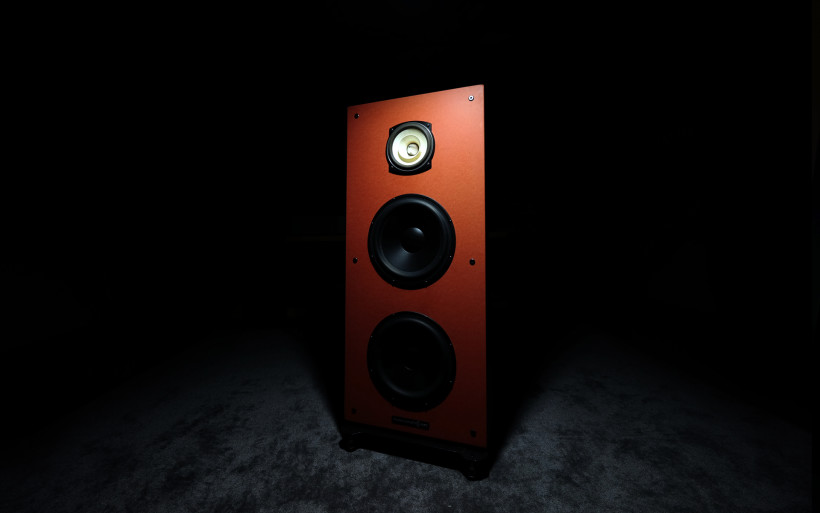 The bass presence is the next obvious thing. The Israeli OB affair was much more thunderous and present in this regard, W8 turned out to be in fact much smaller yet as equally agile. Would you like to have the downstairs department big, bold, fast and coherent? Or served not as grandly, more spherically and with the same speed? Both were enjoyable, that’s true. But Trio10 Voxativ had it more majestic and this was something very appealing to me on a non-journalistic, personal and enthusiastic level. Big inches move a lot of air and generate grand scale in the process. Ze’ev’s performer was also more tangible in the midband and one could say that this was equal to more refinement and rightfully so. Full-range transducers simply shine here and to listen to one is to understand what I’m all about here. Of course it’s also important to know that both products have different room and amplification needs, visually clearly are from another mother, meant to please different audience and targeted at wallets of different thickness. But this aside, this review’s takeaway is simple: Trio10 Voxativ is a truly spectacular performer. Not only was it able to hold its ground easily against Cube Audio Magus, but also my reference model with no effort whatsoever. Apples and oranges? This time around more than ever.
The bass presence is the next obvious thing. The Israeli OB affair was much more thunderous and present in this regard, W8 turned out to be in fact much smaller yet as equally agile. Would you like to have the downstairs department big, bold, fast and coherent? Or served not as grandly, more spherically and with the same speed? Both were enjoyable, that’s true. But Trio10 Voxativ had it more majestic and this was something very appealing to me on a non-journalistic, personal and enthusiastic level. Big inches move a lot of air and generate grand scale in the process. Ze’ev’s performer was also more tangible in the midband and one could say that this was equal to more refinement and rightfully so. Full-range transducers simply shine here and to listen to one is to understand what I’m all about here. Of course it’s also important to know that both products have different room and amplification needs, visually clearly are from another mother, meant to please different audience and targeted at wallets of different thickness. But this aside, this review’s takeaway is simple: Trio10 Voxativ is a truly spectacular performer. Not only was it able to hold its ground easily against Cube Audio Magus, but also my reference model with no effort whatsoever. Apples and oranges? This time around more than ever.
Summary
The most affordable PureAudioProject Trio10 model – Timeless – turned out to be a great product. It sounds very good, is nicely made and honestly I can’t imagine a better way to start an adventure with open-baffles. Not only this one easily delivers key OB features, but is very aggressively priced and that’s always good for a customer. Still, things turned upside down very rapidly past Trio10 Voxativ arrival.
One might think that mere one driver swapped and some XO tinkering won’t net too much of a difference/improvement, let alone adding extra €2’490 to the final tab. Wrong. The performance quality gap between the Trio10 club’s Timeless and Voxativ is not slight or just audible but plainly big. After comparing these two, one won’t have to wonder where all the extra money went in the latter case, not a chance. Simply because this product not only brawls with pricier Boenicke W8 and Polish Cube Audio Magus with ease, but also keeps up with ’em like it was nothing. The choice between all three performers comes down to currently owned setup, amount of space available, aesthetics and – above all else – personal preferences. But not quality alone as in this regard things are even-steven.
To marry open-baffles with full-range transducers via one attractively priced product was a very solid master plan to begin with. With Trio10 Voxativ, one gets the best of both these worlds, but served in sophisticated, effortless, easygoing, lively, music oriented and utterly enjoyable fashion. To hear speakers this great in their price range is a rare thing. Yet the true beauty of our Israeli case lies within its ability to easily throw punches far above its weight. PureAudioProject Trio10 Voxativ is smart, superbly sounding, highly recommended and – as a complete package – one of the best ways known to yours truly to spend €5’500 in the audio game. This one’s not a gamble, but the very real deal. Highly recommended and ’till next time!
Associated equipment:
- Amplifier: Trilogy 925, Sanders Sound Systems Magtech, FirstWatt F7, trilogy 993 + 903
- Sources: Lampizator Golden Gate (Psvane WE101D-L + KR Audio 5U4G Ltd. Ed.)
- Speakers: Boenicke Audio W8, Cube Audio Magus
- Transports: Asus UX305LA
- Speaker cables: Forza AudioWorks Noir Concept, Audiomica Laboratory Celes Excellence
- Interconnects: Forza AudioWorks Noir, Audiomica Laboratory Erys Excellence
- Power supply: Gigawatt PF-2 + Gigawatt LC-2 MK2 + Forza AudioWorks Noir Concept/Audiomica Laboratory Ness Excellence
- Rack: Franc Audio Accessories Wood Block Rack
- Music: NativeDSD
Retail prices of reviewed components in EU (incl. tax):
- PureAudioProject Trio10 Voxativ: €5’490
Manufacturer: PureAudioProject


